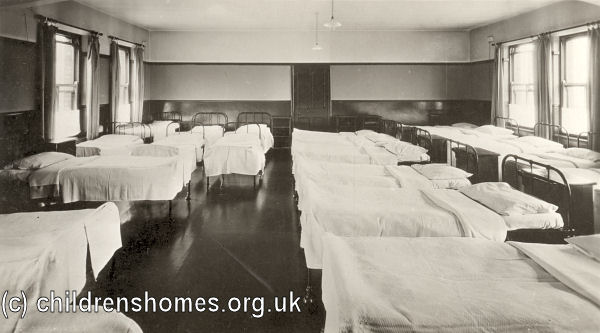Shepherd Street Mission and Children's Home, Preston, Lancashire,
What became known as the Shepherd Street Mission was founded in 1876 by Joshua Williamson, a Preston grocer, after an encounter with two homeless children in the town. The mission, initially based in Rose Street, held non-denominational meetings. It also became involved in rescuing children from undesirable circumstances and in providing temporary accommodation for homeless adults. In 1879, in collaboration with the Lancaster Road Congregational Chapel, the charity took over a former weaving factory in Shepherd Street, with accommodation for a hundred people, subsequently expanded to accommodate a further fifty.
The charity's work in rescuing children from homelessness and poverty grew rapidly. It was supported by with subscriptions and donations from the public and also established a firewood-chopping business to generate further income.
In 1900, Williamson gave up his grocery business and devoted himself to looking after the children. In the same year, the charity purchased Crow Hill House, 125 Oxford Street, where up to thirty children could be housed. Williamson and his wife acted as resident superintendent and matron of the establishment. Children of school age attended St James's and the Orchard Schools. As they grew older, they were found employment, some being emigrated to Canada.
Williamson died in November 1918 and was succeeded as secretary of the charity and superintendent of the home by Mr W.A. Collins, with Mrs Collins as matron. A report that year noted that the beds in the dormitories were each provided with a locker, while a few of the older children who slept in separate rooms were given large tin boxes in which to store their belongings. No uniform was worn by the children and they were dressed as others were. Each was provided with a rough suit for working in, another for school, and a third for Sunday, and they are well taught how to take care of their belongings. More garden work had lately been undertaken with the cultivation of fruit and vegetables being advantageous to the home. A few head of poultry were kept, one or two pigs, a couple of goats, and some rabbits. That Christmas, about 200 children were treated to a Christmas breakfast at the Shepherd Street Mission Hall — the figure was lower than in many previous years, notably 1914 when it was over 1,300. The charity also had a Refuge, Shelter, and Poor Children's Rooms in Laurel Street.
In 1926, a new wing was opened at the home, with accommodation for 20 beds, with bathrooms, for boys. In addition, the old portion of the building was redecorated and fitted with electric lighting, a new laundry was installed, and the gardens extended.

Shepherd Street Mission and Children's Home, Preston, dining room, 1926. © Peter Higginbotham

Shepherd Street Mission and Children's Home, Preston, boys' dormitory, 1926. © Peter Higginbotham
The Shepherd Street premises were sold to the NSPCC in 1989 and the proceeds used to form the Shepherd Street Trust which assists persons under the age of 21 who reside within a radius of 50 miles around Preston Town Hall.
Records
Note: many repositories impose a closure period of up to 100 years for records identifying individuals. Before travelling a long distance, always check that the records you want to consult will be available.
- Special Collections, The Library, University of Central Lancashire, Preston PR1 2HE. Holds a variety of material including Committee minutes, newspaper reports, rules for the running of the homes, notes of children sent to Canada, and images of rescued children.
Bibliography
- Higginbotham, Peter Children's Homes: A History of Institutional Care for Britain s Young (2017, Pen & Sword)
Links
Except where indicated, this page () © Peter Higginbotham. Contents may not be reproduced without permission.


